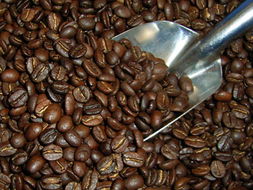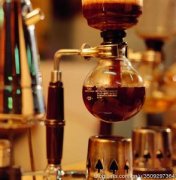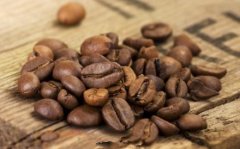There are three ways to judge the baking degree visually.
1. It is judged by the change in the smell of "baking smoke": this is a method of baking depth control that was more widely adopted in the 19th century.
two。 Judged by the "temperature change" inside the coffee bean: this method is most commonly used in today's more advanced bean dryers.
3. By the coffee bean "appearance coloring degree" to judge: this needs to rely on empirical judgment, or rely on a sophisticated machine to assist judgment.

Judging the baking depth visually is probably the most approachable way right now, and it's also the easiest way for people who bake coffee bags at home. On the other hand, large-scale commercial bean dryers tend to use the way to detect internal temperature changes in coffee beans, and gradually more and more small-scale cafes are also moving towards this trend because of the use of professional bean dryers. Compared with these two methods, judging the evolution of the baking stage by the change of smell has become a forgotten skill, and only a handful of bakers have adopted this method, which requires professional training. Most small cafes in the early 20th century trained roasters in this way.
The same batch of coffee beans (that is, coffee beans with the same harvest time and post-processing period) are roasted by two different roasters, qualified to roast coffee beans to a similar degree of coloring or baking depth, and the taste may be roughly similar; in other words, the flavor change of coffee beans is mainly attributed to roasting. That's why the flavors of the two handfuls of coffee beans at the same baking depth are so similar, rather than the two completely different flavors. However, if different baking utensils, different baking methods and different baking concepts are used, it is a different matter.
Some roasters tend to bake coffee beans slowly at lower temperatures, others tend to bake coffee beans quickly at higher temperatures, and some roasters increase the baking temperature several times according to different baking stages. after the moisture in the caffeine bean is removed more fully, the temperature is increased to turn on the pyrolysis. Thanks to a variety of roasting methods and roasting appliances (each with the support of believers), the world of boutique coffee has flourished in so many ways.
Important Notice :
前街咖啡 FrontStreet Coffee has moved to new addredd:
FrontStreet Coffee Address: 315,Donghua East Road,GuangZhou
Tel:020 38364473
- Prev

Coffee innocent 101 reasons to drink coffee is healthy
1. A kind of fruit 2. It's good for the earth. Natural diet 4. Sustainable development of 5. 5. Safe 6. Rich in antioxidants 7. It's not just caffeine. A functional food 9. Not addictive 10. Healthier than Coke 11. Healthier than chocolate 12. Healthier than wine and beer. Healthier than spirits 14. Healthier than soda 15. Healthier than champagne 16. Specific energy
- Next

The use of expired coffee powder
Although expired coffee powder can no longer be drunk, coffee has the effect of absorbing peculiar smell and can turn waste into treasure. The cooking pot at home has been used for a long time, inside and outside is full of greasy, but also has a peculiar smell. Put the expired coffee powder or boiled coffee grounds in the pot and roast it over the fire, and the greasy and smell in the pot will gradually disappear. An oven in which delicious food is often baked at home.
Related
- Beginners will see the "Coffee pull flower" guide!
- What is the difference between ice blog purified milk and ordinary milk coffee?
- Why is the Philippines the largest producer of crops in Liberia?
- For coffee extraction, should the fine powder be retained?
- How does extracted espresso fill pressed powder? How much strength does it take to press the powder?
- How to make jasmine cold extract coffee? Is the jasmine + latte good?
- Will this little toy really make the coffee taste better? How does Lily Drip affect coffee extraction?
- Will the action of slapping the filter cup also affect coffee extraction?
- What's the difference between powder-to-water ratio and powder-to-liquid ratio?
- What is the Ethiopian local species? What does it have to do with Heirloom native species?

